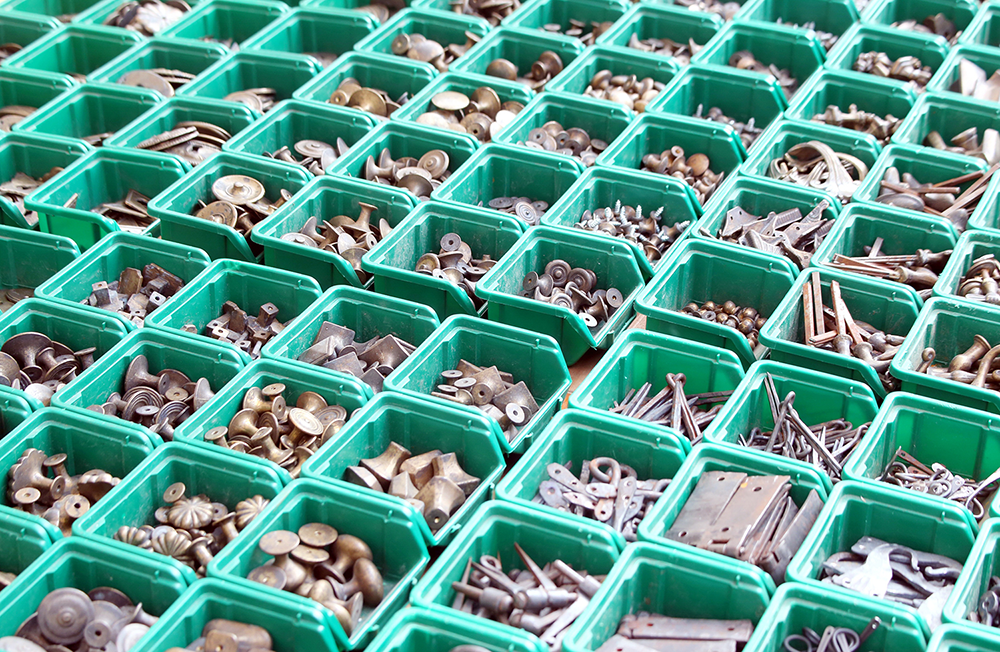[gravata]Using The Best Techniques Is Important To Avoid Losses.[/gravata]
Managing inventory well is essential to all types of businesses and also for industries. Without good planning in this area, there might be too many or too few products, which always has a negative impact on business.
Achieving balance in terms of inventory is always a challenge. “Stocks can be a great differential for any business, both on the positive side as well as on the negative”, says Julio Cunha, professor of Inventory Management from Foundation Armando Alvares Penteado (FAAP) in São José dos Campos (SP).
Having a lot of merchandise may seem interesting, providing security to meet the demand, but it increases costs and reduces the working capital necessary for the company. In contrast, if only a minimal quantity of each product is maintained sales may be lost. Furthermore, to purchase smaller volumes, in some cases the amount charged by suppliers will be higher.
It’s not possible to predict with certainty the pace of sales or factors that will influence it. But it is possible to take steps to have good control without being an expert in technology or investing a lot.
A good start is in organization. Professor Cunha explains that inventory should be kept clean and organized, with each item properly identified in appropriate and visible locations.
It’s also important that people who access the stocks are disciplined and keep them in order, so that we can know what’s in them. Organization also facilitates inventories and inhibits excess purchases.
A second measure easy to implement is to maintain control of inflows and outflows of stock items. This can be done manually, in a log book, or in a spreadsheet on your computer.
“Once we have control of inflows and outflows we can manage which items have more or less turn-over, which can help average consumption forecasts and identify items that aren’t selling. These measures are simple and can make a big difference to the business”, emphasizes Cunha.
To prevent product loss due to surpassing the expiration date, a best practice is to store perishable items separate from the others.
It’s also interesting to use labels with validity dates highlighted so that every time an item is requested, the oldest one is selected and sold. It’s what is called FIFO (First In, First Out, meaning that the first item to enter inventory is the first to go out). It’s also recommended to have a record log of perishable items with entry and expiration dates, to have a control of those that are close to expire.
Promotions are another useful action in inventory management or when there is too much of one type of product. A tip is to use them to avoid losses with products that are with their validity date almost expired.
“When we have good inventory management we can identify items that haven’t moved for a long time, are occupying valuable space and that could be made available at lower prices. The same procedure can be applied to products with excessive inventory”, suggests the Professor.
Extra care should be taken with sales volume oscillation that occurs at different times of the year, known as seasonality. It’s no use keeping the same inventory all year round in sectors such as refrigeration and air conditioning, whose sales are higher in the summer than in the colder months.
“When it comes to seasonal sale items, good inventory management helps to identify them and to define their average consumption as well as the periods that they must be available for sale and the right time to be purchased. With this information, it’s possible to avoid excessive and unnecessary inventories”, affirms the professor Julio Cunha.
Best practices
An example of a company that adopts best practices to manage its inventory is Multifrio. Headquartered in Ribeirão Preto, the company operates in retailing goods for household and commercial refrigeration, air conditioning, as well as cold chamber projects. To develop its activities, it has a large area, carrying a wide variety of products. There, all that is available is duly registered, with a control of inflows and outflows of products.
According to Marcos Henrique Zanotti, director of the company, this is an essential step. “Registering and controlling everything that enters and leaves the company creates a certain amount of work, but it’s worth it. This helps us to optimize the investment in inventory, make sales estimates, plan purchases with suppliers and production, as well as discover which products sell the most and those that sell the least”, he explains.
The work, however, doesn’t stop there. “It’s not enough to have everything on paper or on the computer screen. It’s essential to have a logical organization of where each product can be found. Dividing the products by categories and creating codes for each one are ways to maintain order and facilitate location”, he adds.
Zanotti also recommends training employees to use the system and be alert to the need to make regular backups of your data, to avoid unpleasant surprises with information losses. He considers it normal to have stock errors, even with all this control. “Therefore, an inventory must be taken periodically to correct for differences,” he emphasizes.
[box side=”alignleft” color=”box-vermelho” pos=”horizontal”]
Helpful hints to better manage inventory
- Prioritize basic items in times of crisis or market downturns, since these will have higher demand.
- Track sales figures of the various items, to know the average consumption of each and calculate the necessary inventory.
- Know the trends in your industry, in terms of demand, in order to estimate future sales.
- Be quick to react when products aren’t selling: if the loss is inevitable, it’s best to minimize the loss, selling at a discount.
- In the event of non-moving items, seek every opportunity to sell them even with deep discounts: use Internet offers, closeout sales and even negotiations with competitors.
Source: Adapted from Folha de S. Paulo, article from July 19, 2015, with information from Sebrae-SP
[/box]




